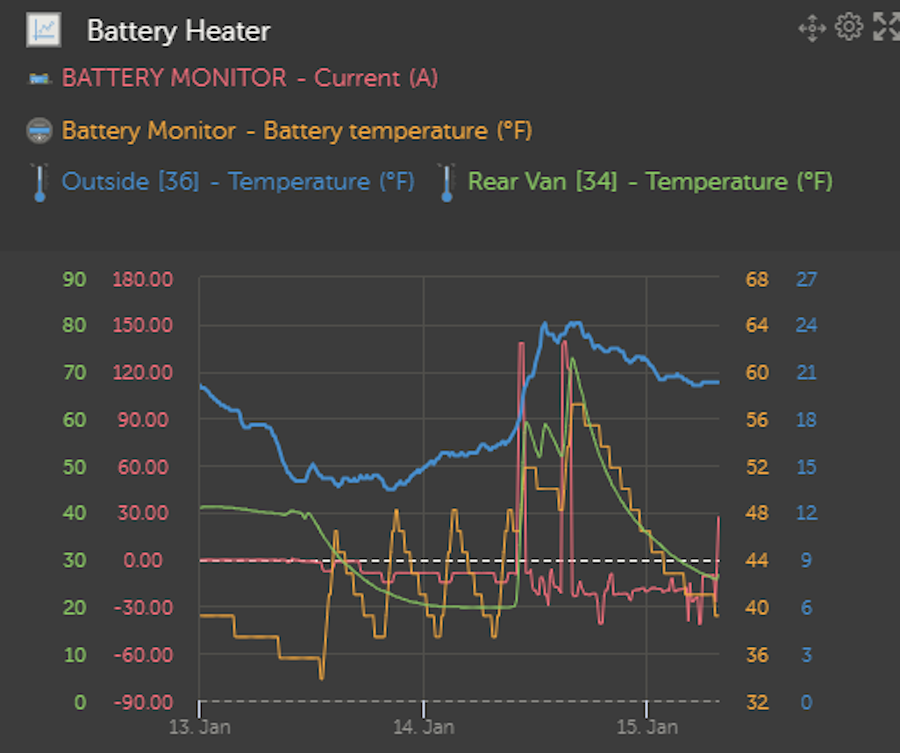The Portland area (as much of the country) just went thru a cold spell, this was a pretty good chance to collect some battery temp data. I have a Lithionics 555 Ah battery with a built in heater. I have the heater going thru a switch, this is unneeded at it is regulated on it's own.
I have about 290 watts of solar on top of the van, this time of the year it is pretty useless. In my location we can flirt with freezing temperatures but it not what I would call normal. When not using the van, I am usually plugged in, and have my Truma Combi set to around 45 degrees. The Combi can be set use propane or electric or a combination of the two, I have it set to electric only.
I generally set the Victron Multiplus II 3000/120 to charge only and set the charger to 2 amps. This will pretty much cover most of my power overhead as it sits in the driveway, the battery stays pretty much at the same SOC level.
So anyhow that was the goal going into this freeze.

In looking at the above chart you can see we already below freezing, and starting to drop in the teens (blue line). The heater was pretty much doing its job keeping the inside of the van around 40 (green Line). The issue I saw here was that the battery internal temp was coming down. Granted the outside temp was getting lower, but this did catch me a little off guard. I quickly enabled the battery heater and you can see the battery temp start to go back up. (yellow line).
Shortly after that, I lost power at the house. The east winds were high and it did not look like power was coming back on soon. I quickly ran an extension cord to the van and turned on the inverter. I had the blower for the fireplace insert connected, a charging station for phones and lights. About a day later I included the fridge.
After that you can see the battery heater go thru multiple cycles. Eventually you will see two high current inputs where the battery temps goes even higher. This was where I was idling the van and charging the battery with my secondary alternator. Luckily my power came back on two days later.
After getting power back, I left the heater off. here is another shot of the battery heater in action.
